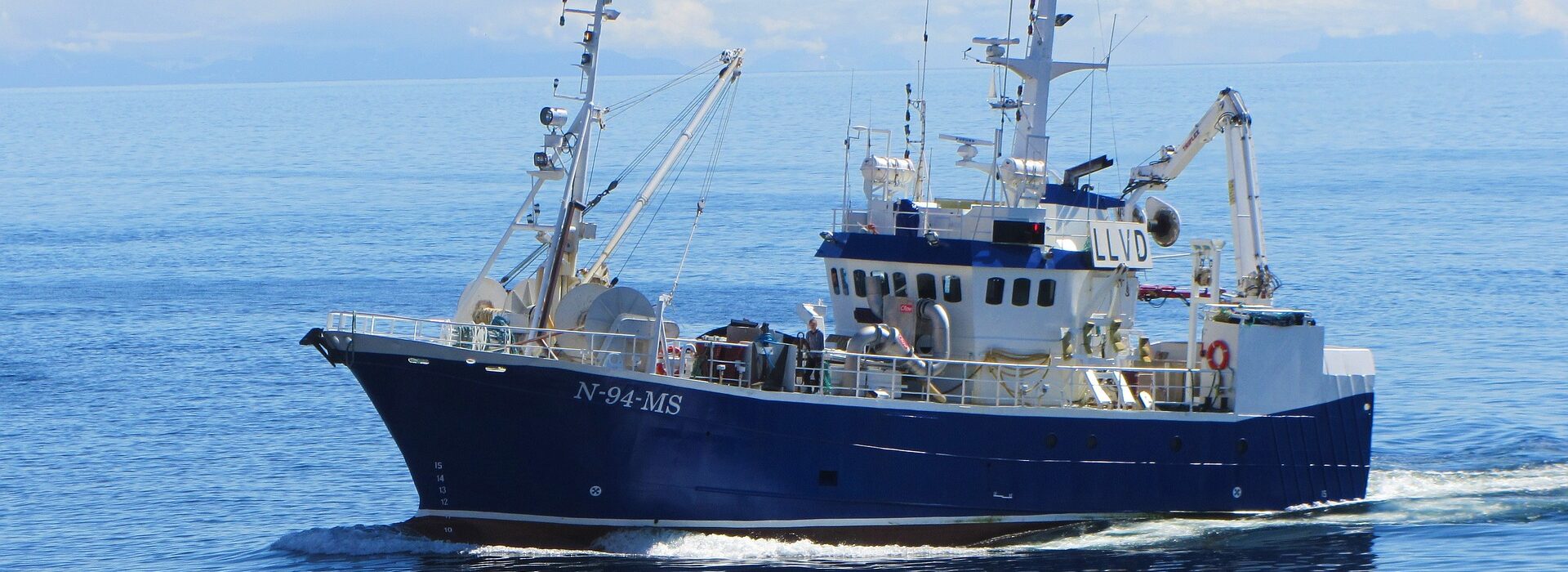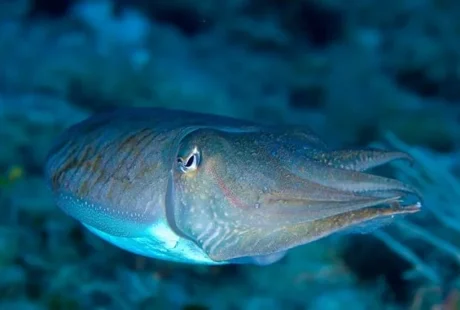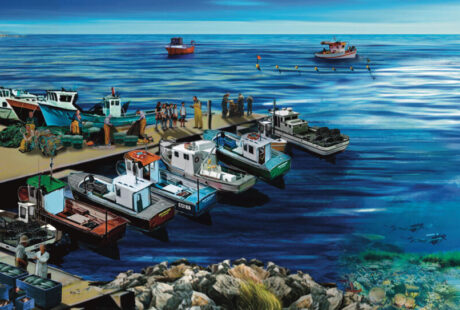EU Council decision on 2026 fishing limits fails to implement legally required safeguards, jeopardising the fragile marine ecosystem
Luxembourg – 28th of October 2026 – Environmental organisations across Europe (Baltic Salmon Fund, Bund für Umwelt und Naturschutz Deutschland, Coalition Clean Baltic, Danmarks Naturfredningsforening, Deutsche Umwelthilfe, FishSec, Oceana, Östersjölaxälvar i samverkan, Pasaules dabas fonds, Seas At Risk, WWF Baltic Sea Programme) express grave concern following today’s EU Fisheries and Agriculture Council of Ministers’ (AGRIFISH) decision on Baltic Sea fishing opportunities for 2026, warning that the agreement fails to provide the precautionary approach necessary to rebuild the Baltic Sea’s critically depleted fish populations and fragile marine ecosystem.
Despite clear scientific warnings[1] about the dire state of the Baltic Sea ecosystem, well-established legal frameworks to remedy the situation, as well as a good, precautionary and recovery-oriented proposal on fishing opportunities for 2026 from the European Commission, the Council set fishing limits that breach legal requirements[2] under both the Common Fisheries Policy (CFP) and the Baltic Sea Multiannual Plan (MAP), prioritising short-term economic interests over long-term ecosystem recovery.
“The evidence is clear: the Baltic Sea ecosystem is in severe distress, and current management approaches are not working,” said Aimi Hamberg, Marine Policy Officer at Coalition Clean Baltic. “We need fishing limits set well below single-stock scientific advice to account for ecosystem interactions, data uncertainties, and the critical role these fish species play in the Baltic food web. Instead, the Council has yet again continued to push biological limits to their breaking point.”
“Rebuilding fish populations and adopting a precautionary approach is the only way to ensure future resilience for the Baltic fishing and coastal communities,” Added Rémi Cossetti, Marine Policy Officer at Seas At Risk. “As the Commission is working on its Vision for Fisheries in 2040, this type of reckless decision by the Council erodes the trust in the EU’s ability to deliver on its own environmental and legal commitments and on securing a livelihood for coastal communities.”
Breaking the law on herring stocks
Of particular concern are the decisions on pelagic forage fish populations—herring and sprat—which form the backbone of the Baltic Sea food web. The Council’s Total Allowable Catch (TAC) for central Baltic herring and Gulf of Bothnia herring exceeds the levels required to comply with Article 4.6 of the Baltic Sea MAP, which mandates that fishing opportunities must be set to ensure a less than 5% chance of stocks falling below critical biomass levels (Blim).
The Council agreed to increase the central Baltic herring quota by 15% compared to 2025 levels, despite the stock being in poor condition and barely above critical levels[3]. This decision violates the Baltic Sea MAP by creating an unacceptably high risk and exceeding the legal 5% probability limit of falling to critically low levels that could impair the population’s reproduction.[4]
For Gulf of Bothnia herring, while the Council reduced the quota by 41%, this reduction also falls far short of what is needed to comply with the law. The agreed TAC creates a much higher probability of the spawning stock falling below Blim, thereby directly violating legally binding safeguards designed to prevent irreversible damage to fish populations.
“Herring and sprat are not just important commercial species—they are the vital link in the Baltic food web that supports everything from cod and salmon to seabirds and marine mammals,” explained Cathrine Pedersen Schirmer, Senior Fisheries Advisor at FishSec. “Managing these forage fish with extra precaution is essential for rebuilding the entire ecosystem, yet the Council has done the opposite.”
Sprat: Reckless 45% increase despite uncertain recruitment forecast
The Council’s decision to increase the sprat quota by 45% compared to 2025 is particularly alarming given the scientific uncertainties and the stock’s decreasing trend. From 2021 to 2023, Baltic Sea sprat suffered some of the lowest recruitment rates ever recorded for the stock. While the International Council for the Exploration of the Sea (ICES) advised catches based on a seemingly strong 2024 year class, this estimate relies on a single autumn survey in northeastern areas, making its contribution to overall sprat biomass highly uncertain.
“The Council has chosen to gamble on uncertain recruitment forecasts from a single, geographically limited survey, ignoring three consecutive years of historically weak recruitment,” said Cathrine Pedersen Schirmer, Senior Fisheries Advisor at FishSec. “This is exactly the kind of overly optimistic management that recent scientific studies[5] have shown prevents the recovery of overfished stocks. Given sprat’s critical role as a forage species in the Baltic food web, this decision is reckless and irresponsible.”
The sprat decision is further complicated by ongoing issues with misreporting between sprat and herring, as well as mixing with degraded herring stocks in fisheries—factors that demand extra precaution rather than quota increases.
“Recognising food-web interaction between species in decision-making on fishing opportunities is a key element of an ecosystem-based approach to fisheries management, an important objective of the Common Fisheries Policy. EU fisheries ministers, however, clearly did not prioritise the recovery of sprat and herring in their decisions today on Baltic Sea fishing limits for 2026. The agreed TACs for small pelagic fish are too high to contribute to the rebuilding of these important populations and at the same time to support overall Baltic Sea ecosystem health,” said Justyna Zajchowska, Fisheries Lead for WWF Baltic Sea Programme.
Cod: recovery remains elusive with a too high bycatch quota
ICES continues to advise zero catch for both eastern and western Baltic cod stocks, which remain below critical biomass limits despite years of severe catch restrictions. Despite the Commission’s proposal to reduce the bycatch quota on both stocks, the Council failed to acknowledge the severity of the situation or prioritise the recovery of these depleted top predators by maintaining the unacceptable high bycatch quota.
“To keep such high bycatch quotas for cod stocks while scientists say they should have zero catch is completely inadequate,” said Valeska Diemel, Fisheries Policy Officer at BUND. “The Council’s failure to prioritise cod recovery when setting high cod bycatch quotas demonstrates a lack of commitment to the multispecies, ecosystem-based management that EU law requires, and that is absolutely key for restoring the Baltic Sea ecosystem.”
Maintaining a high by-catch quota for threatened species is not only against the scientific advice of zero catch, but it also does not incentivise the fishing industry to fish more selectively.
Further restrictions on salmon fisheries are necessary
Baltic salmon populations have suffered from poor survival during their feeding migration in the sea. This has led to a drastic decrease in the number of returning spawners in the rivers. It is impossible to predict the survival of salmon during their sea phase in advance, so the current status and development of salmon stocks are on very uncertain grounds.
The Council decided to decrease the main basin salmon TAC in line with the ICES advice by 27% and maintain the ban on commercial salmon fishing in the main basin of the Baltic Sea. In the Gulf of Finland, it was decided to increase the level by 1% compared to 2025 due to the stable or improving status of the Gulf of Finland wild salmon populations.
“After three years of a sharp decline in returning salmon, drastic measures need to be introduced. Wild salmon is not a fishable resource today. It is of utmost importance that Finland and Sweden set national restrictions so that salmon fishing along the coast begins late enough for the large wild salmon to have already reached the rivers. We need to direct commercial salmon fishing exclusively to farmed stocks in SD 31 in close proximity to the large farmed rivers, with fishing starting from July 1.” said Thomas Johansson, Secretary General of the Baltic Salmon Fund.
Joint commitment offers hope, but action is needed now
While the Council’s decisions on Baltic Sea fishing opportunities are deeply disappointing, there is a glimmer of hope in the joint commitment issued by the European Commission and Baltic Sea Member States agreeing on the need to request ICES to provide specific scientific advice on fish stocks rebuilding trajectories.. Although this commitment is not legally binding and falls short of the immediate action needed, environmental organisations hope it signals a turning point in efforts to rebuild the fragile fish populations of the Baltic Sea.
“We cannot continue to manage Baltic Sea fisheries as if each population exists in isolation,” concluded Justyna Zajchowska, Fisheries Lead for WWF Baltic Sea Programme.“The joint commitment on rebuilding fish stocks is a welcome recognition that current management needs to be improved. However, words must be followed by action. The future of this fragile ecosystem—and the livelihoods it supports—depends on implementing truly precautionary, ecosystem-based fisheries management starting now, not in the distant future. We will hold the Commission and Member States accountable to their pledge.”
Notes to editors:
- The Baltic Sea Multiannual Plan (Regulation EU 2016/1139) establishes legally binding rules for managing cod, herring, and sprat stocks in the Baltic Sea.
- Article 4.6 of the Baltic Sea MAP requires that fishing opportunities be set to ensure less than 5% probability of stocks falling below Blim.
- ICES has advised zero catch for western Baltic herring since 2019, for eastern Baltic cod since 2020, and for western Baltic cod since 2025.
- The Common Fisheries Policy (Regulation EU 1380/2013) requires that all fishing opportunities be set according to the precautionary approach (Article 2.2) and ecosystem-based approach to fisheries management (Article 2.3)
- Full NGO recommendations on Baltic Sea fishing opportunities for 2026 are available here
[1] See for instance the HELCOM HOLAS assessment (HELCOM (2023): State of the Baltic Sea. Third HELCOM holistic assessment 2016-2021. Baltic Sea Environment Proceedings n°194 or ICES (2024). Baltic Sea Ecoregion – Ecosystem Overview. ICES Advice: Ecosystem Overviews. Report. https://doi.org/10.17895/ices.advice.27256635.v1
[2] Preamble 10 and Art. 2.2 of the CFP requires that sustainable exploitation of marine biological resources should be based on the precautionary approach. In addition, Art 4.6 of the Baltic Multiannual Plan mandates that fishing opportunities be set to ensure less than 5% probability of stocks falling below Blim.
[3] ICES assessment of central Baltic herring shows that this stock has a relative spawning-stock size below MSY Btrigger and below the precautionary limit Bpa, and only slightly higher than the critical limit reference point Blim, below which reproduction is likely to be impaired.
[4] An estimated catch of 103 073 t corresponds to 5% for p(SSB(2027)<Blim)=5% (ICES advice for central Baltic herring, Table 2). However, in order to account for Riga herring to be taken in SD 28.2 and central Baltic herring to be taken in the Gulf of Riga (SD 28.1), as well as for the Russian share, the catch should be below 89 827t.
[5] See for example Edgar, G. J., Bates, A. E., Krueck, N. C., Baker, S. C., Stuart-Smith, R. D., & Brown, C. J. (2024). Stock assessment models overstate sustainability of the world’s fisheries. Science, 385(6711), 860-865.
Posted on: 28 October 2025


